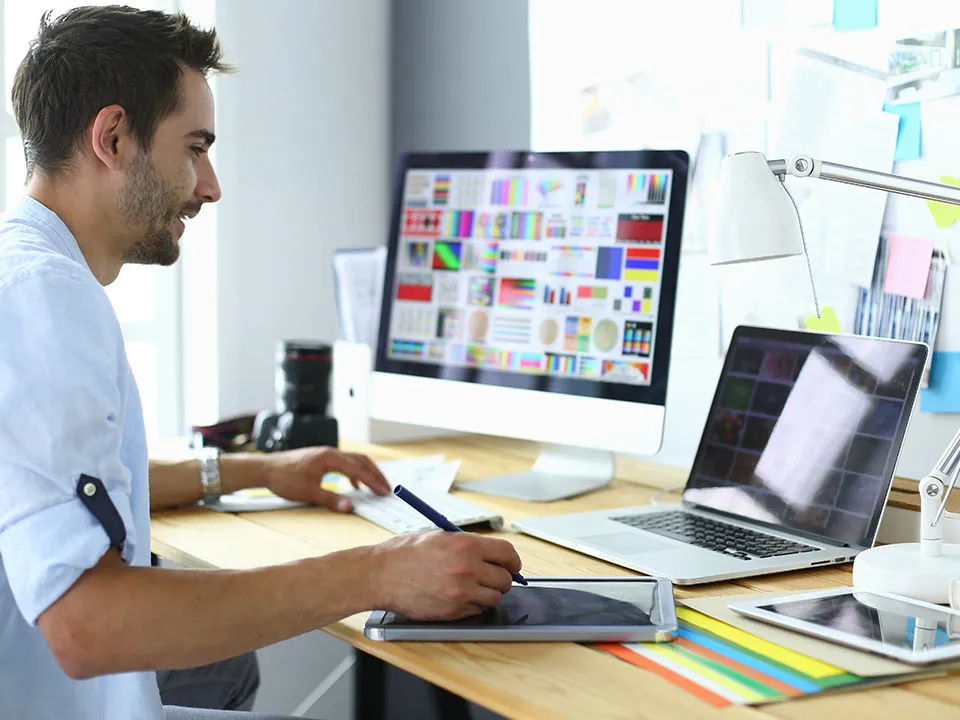
Creating a professional home office is crucial for graphic designers seeking productivity and creativity. An efficient workspace enhances your workflow and overall design quality. Here’s how to set up a home office that supports your graphic design needs.
Choose the Right Location
Firstly, select a quiet and well-lit area in your home. Ideally, this should be a dedicated space that minimizes distractions and allows for focused work. Natural light is beneficial for design work, so position your desk near a window if possible. A comfortable, private location enhances your concentration and creativity.
Invest in Quality Equipment
Next, invest in high-quality equipment essential for graphic design. A powerful computer with ample RAM and a high-resolution monitor is crucial for handling design software and detailed work. Additionally, consider an ergonomic chair and a spacious desk to support long hours of work. Quality equipment ensures smooth operation and reduces physical strain.
Set Up Efficient Lighting
Additionally, proper lighting is vital for a home office setup. Use adjustable desk lamps with daylight bulbs to reduce eye strain and enhance visibility. Ensure your workspace has adequate ambient lighting to prevent harsh shadows. Effective lighting contributes to accurate color representation and better design outcomes.
Organize Your Workspace
Moreover, keep your workspace organized to improve efficiency. Use storage solutions like shelves, drawers, and desk organizers to keep your tools and materials in order. An organized environment minimizes clutter and allows for easy access to essential items, helping you maintain focus and productivity.
Incorporate Design Tools and Software
Furthermore, ensure you have the necessary design tools and software readily available. Install graphic design software like Adobe Creative Suite, Sketch, or CorelDRAW on your computer. Additionally, keep a drawing tablet, external hard drives, and other peripherals accessible for seamless design work.
Personalize Your Space
Lastly, personalize your home office to create an inspiring environment. Add artwork, design samples, or motivational quotes that resonate with you. A personalized space boosts your creativity and makes your office feel welcoming and enjoyable.
In conclusion, setting up a professional home office for graphic design involves choosing the right location, investing in quality equipment, optimizing lighting, organizing your workspace, incorporating essential tools, and personalizing your space. By following these steps, you create a productive and creative environment that enhances your design work and supports your professional growth.
